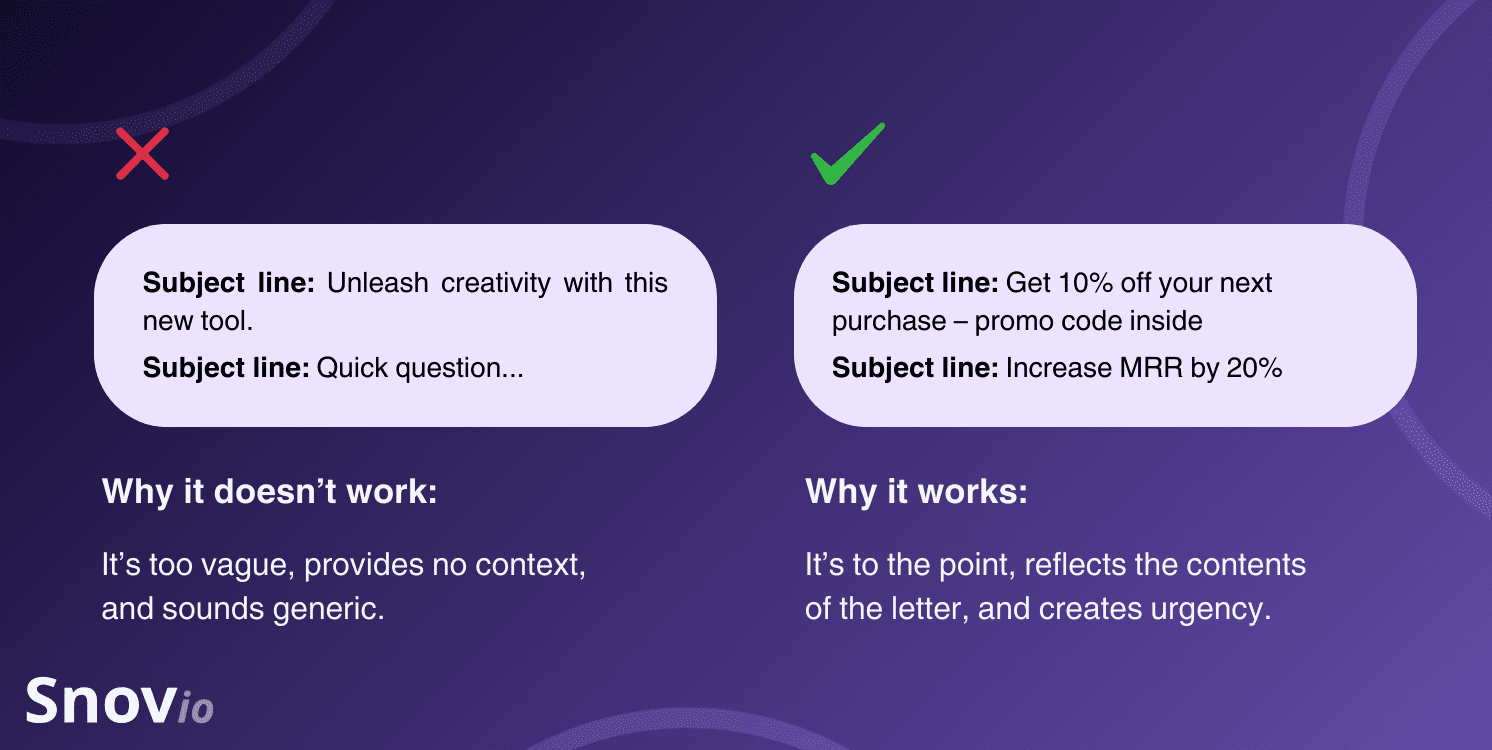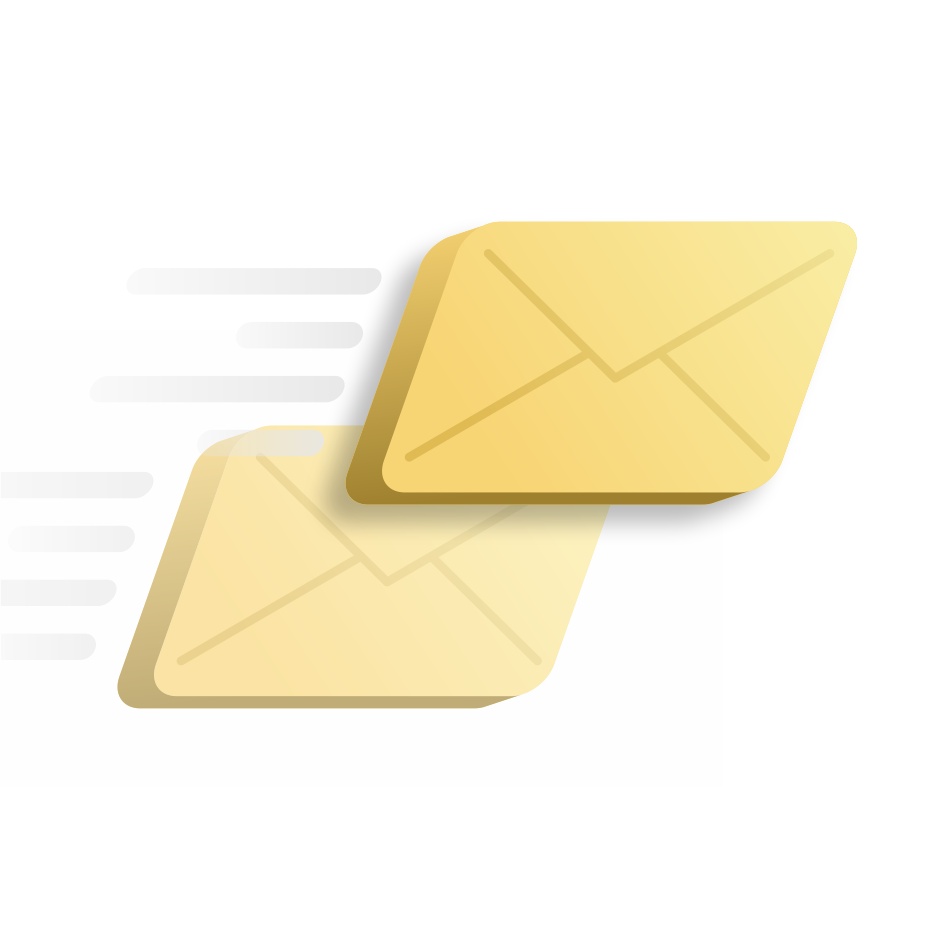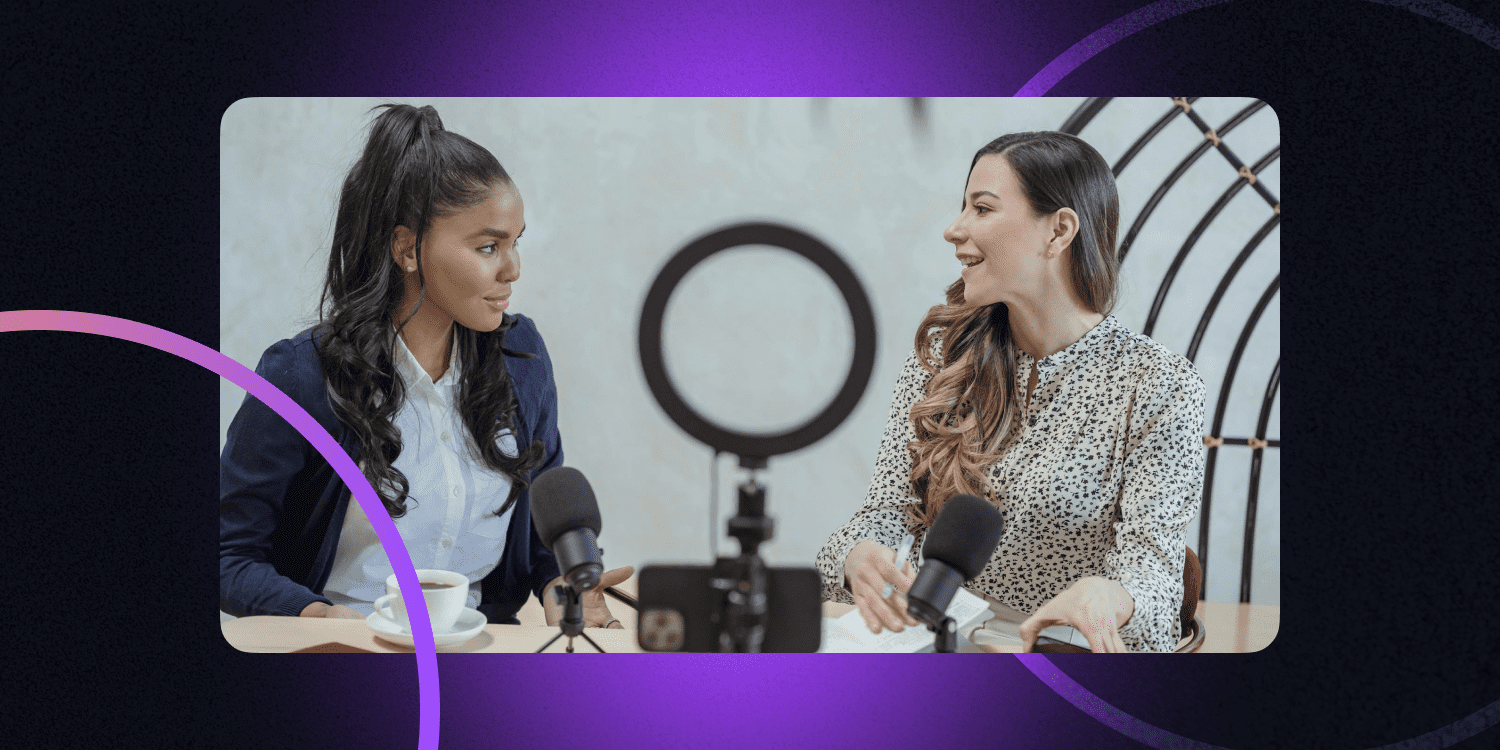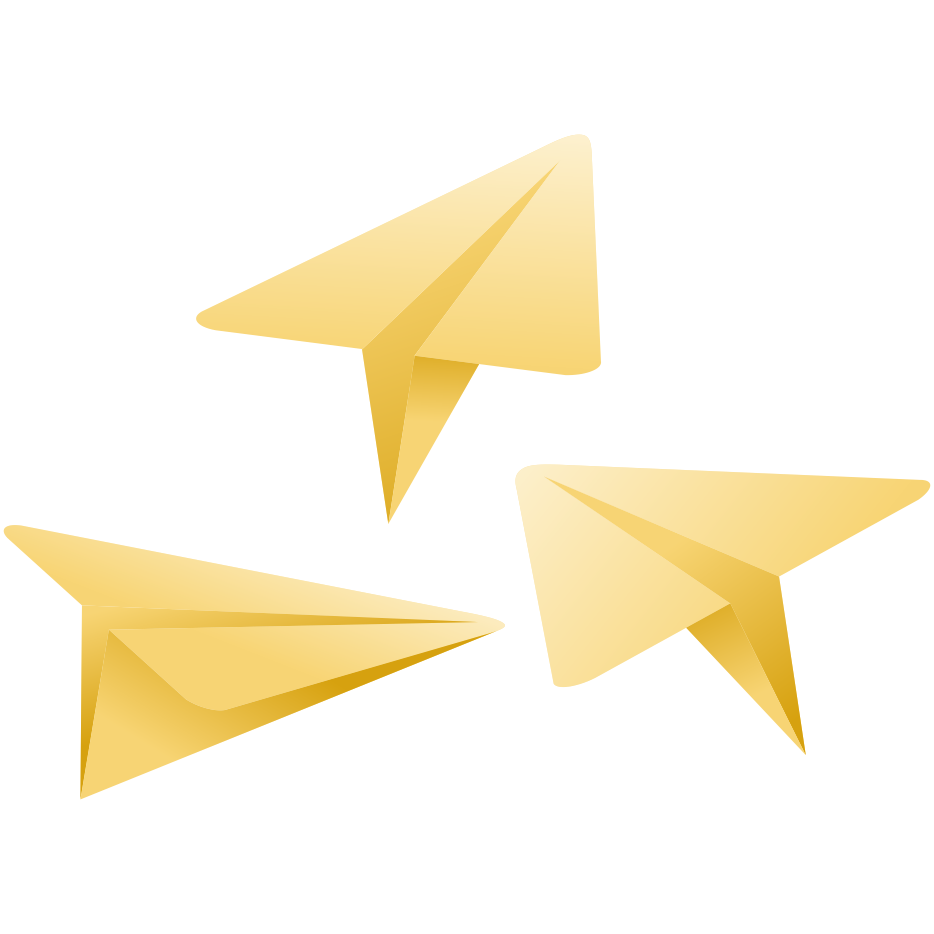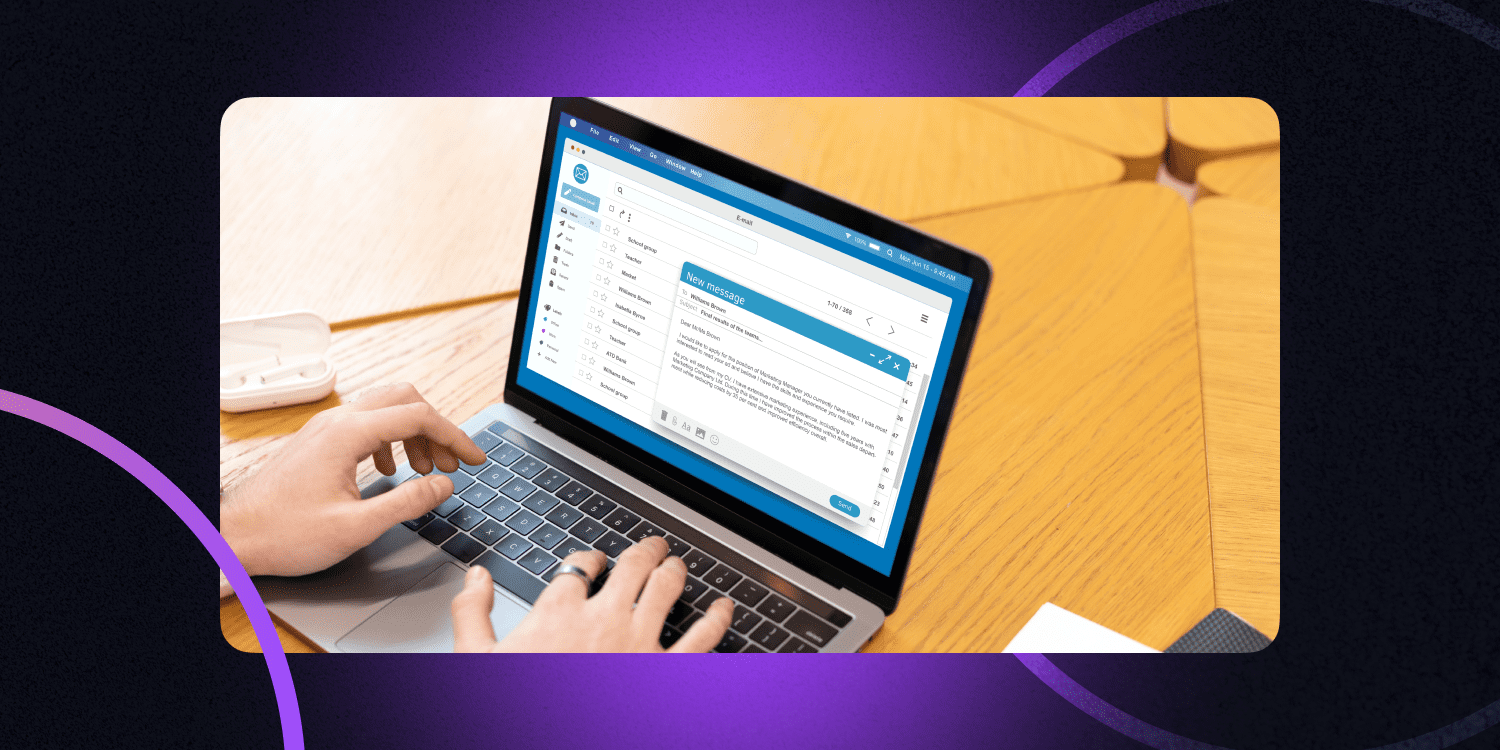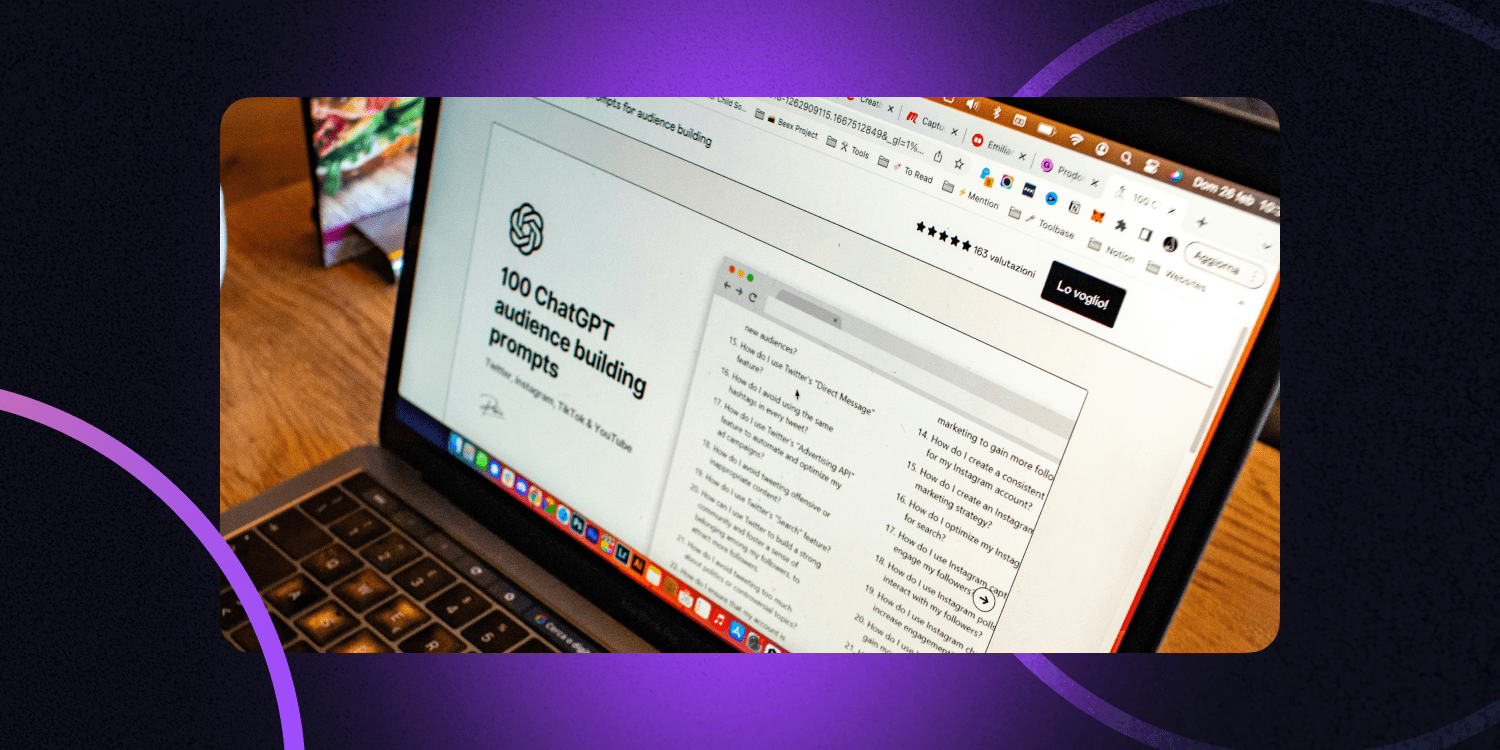TL;DR:
Whether you’re applying for a job or contacting a potential customer, your message should make a positive impression on the recipient. A good professional email is clear, concise, personalized, and focused on delivering value to the recipient.
This article brings you expert advice on how to write this type of email. You’ll find :
- An informative overview of the email’s key elements,
- An easy-to-follow guide on email writing,
- The go-to writing and editing tools,
Examples of professional emails for common scenarios.
At some point in their career, everyone needs to learn how to write a professional email. If you’re not sure you’ve perfected this skill – read on. I gathered expert tips from Snov.io’s marketers to help you create an email that is guaranteed to grab your recipient’s attention.
Outline:
Key elements of a professional email
Regardless of its topic and target audience, any professional email has the following key elements:
- Subject line
- Greeting
- Body
- Sign-off and signature
Let’s break each one down.
1. Email subject line
A subject line often determines whether a recipient will open your letter. Most professionals’ inboxes are overflowing with correspondence and agendas – with tasks. A subject line is your only chance to convince a recipient to spare a few minutes for your letter.
The ideal email subject line should be short, precise, and accurately reflect the email’s contents. I also recommend adding a sense of urgency with the subject line. If recipients decide they can read your email later, it often means they will never get to it.
2. Email greeting
Your email greeting sets the tone. Depending on context and the type of connection you have to the recipient, it can be:
- Formal: “Dear Dr. Shultz,”
- Semi-formal: “Hello Katherine,”
- Casual: “Hi team,”
The worst way you can start your email is by resorting to an outdated “Dear Sir/Madam,” or “To whom it may concern.” It shows that you have no idea who you’re writing to. On rare occasions when you don’t know the recipient’s name, still try to personalize your greeting. For example, start with “Dear [Company name] hiring team” when applying for a job.
Always double-check the spelling of your recipient’s name. Katherine, Kathryn, Catharine — these are different people. Getting it wrong in the first two words is a big no-no.
Email Marketing Specialist at Snov.io
3. Email body
The central part of any letter is its content, of course. In different types of emails, content is presented in various ways. While a letter to your friend can be two pages long and without a clear outline, professional emails usually stick to the following structure:
- Opening line.
Warm a recipient toward you with a quick pleasantry or reference. For example: “It’s been a pleasure to talk to you at the health tech conference last week.” When you’re emailing someone for the first time, always give some context: who you are, why you’re writing, and what you need. Using generic intros kills the chance of your email being read.
💡 Quick tip:
Try to stay away from the cliché lines, such as: “Hope this email finds you well.” This phrase has already become a meme, but some people continue to use it.
Watch the video below to avoid other common mistakes:
- Purpose statement.
Clarify why you’re writing in a couple of concise sentences. For example: “My company is conducting research on green initiatives in the healthcare industry.”
- Supporting details.
Add a short paragraph or a few bullet points diving into your letter’s specifics. For example: “We are looking for medical professionals willing to participate in an anonymous survey. It will take approximately 15 minutes to complete.”
- Next steps or a call to action.
Finish your professional email with a single, clear ask. For example: “If that’s something you’d be interested in, please follow the link below.”
4. Email sign-off
Close the message with a sign-off that’s appropriate for a particular case:
- Formal: “Sincerely,”
- Friendly: “Warm regards,”
- Appreciative: “Thank you.”
Personally, I love adding a fun sign-off when the tone allows for it. Instead of the usual “Sincerely,” it’s more interesting to see something like “Looking forward to your reply more than my vacation.” I’ve had people respond by picking up on the hook I used in my sign-off.
Email Marketing Specialist at Snov.io
Your email signature is your digital business card. Include:
- Full name and role
- Company name and website
- Phone number
- LinkedIn profile or professional tagline
It’s a good practice to have a standard professional email signature for all employees in your company. This way, if you need to hand off the conversation to your colleague, the recipient won’t be confused.
Step-by-step guide on how to write a professional email
The more you write, the less you have to think about how to write a professional email. But when you’re at the beginning of this journey, it’s nice to have a little cheat sheet. Below, I bring you one from Snov.io’s marketing experts.
Follow these steps to write a professional email from scratch:
- Define your objective.
Think about why you’re writing this letter. Envision the outcome you want. It can be a booked demo, an invitation to the job interview, or feedback from users. When you know what your objective is, it’ll be clearer how to start and how to end this professional email.
- Draft a powerful subject line.
Think about the essential idea of your message and its value for the recipient. Now, verbalize it into an attention-grabbing subject line, keeping under eight words if possible.
- Stick to the professional email structure mentioned above.
Select the appropriate greeting and craft a compelling opening line. It’s your chance to start building a connection with the recipient. Follow with your purpose statement, and strengthen it by adding details. At the end, provide a call to action or next steps for the recipient.
While writing, use plain language and avoid unnecessary jargon. Keep sentences and paragraphs short. I recommend sticking to 15-20 words per sentence and 1-3 sentences per paragraph. Structure your text with bullet points or numbered lists to make your professional email easy to skim.
- Incorporate email personalization.
Re-read your message and add mentions of recent achievements or mutual connections, if appropriate. If nothing comes to mind, check your recipient’s social media page. You’re likely to find relevant information there.
If you have more than one recipient, try using Dynamic content to make sure your professional emails still feel personalized, rather than like mass-produced templates.
Email Marketing Specialist at Snov.io
- Add visuals or attachments.
Should your point be highlighted by some infographics, images, or supported with additional documentation? Don’t forget to attach high-quality, clearly named files. The most widely accepted format is PDF, but Excel sheets and Word documents also work.
- Proofread and test.
Check spelling and punctuation. Ensure all links in your letter are functioning properly and that all attached files are in the correct format. I usually read the text aloud to ensure my message sounds natural and avoid redundant phrases.
💡 Quick tip:
Want to craft a perfect professional email?
With Snov.io’s AI email template builder, you can create highly personalized copy based on your ICP.
You can also tweak the email formula and style to ensure your emails sound personal and drive real replies and conversions!
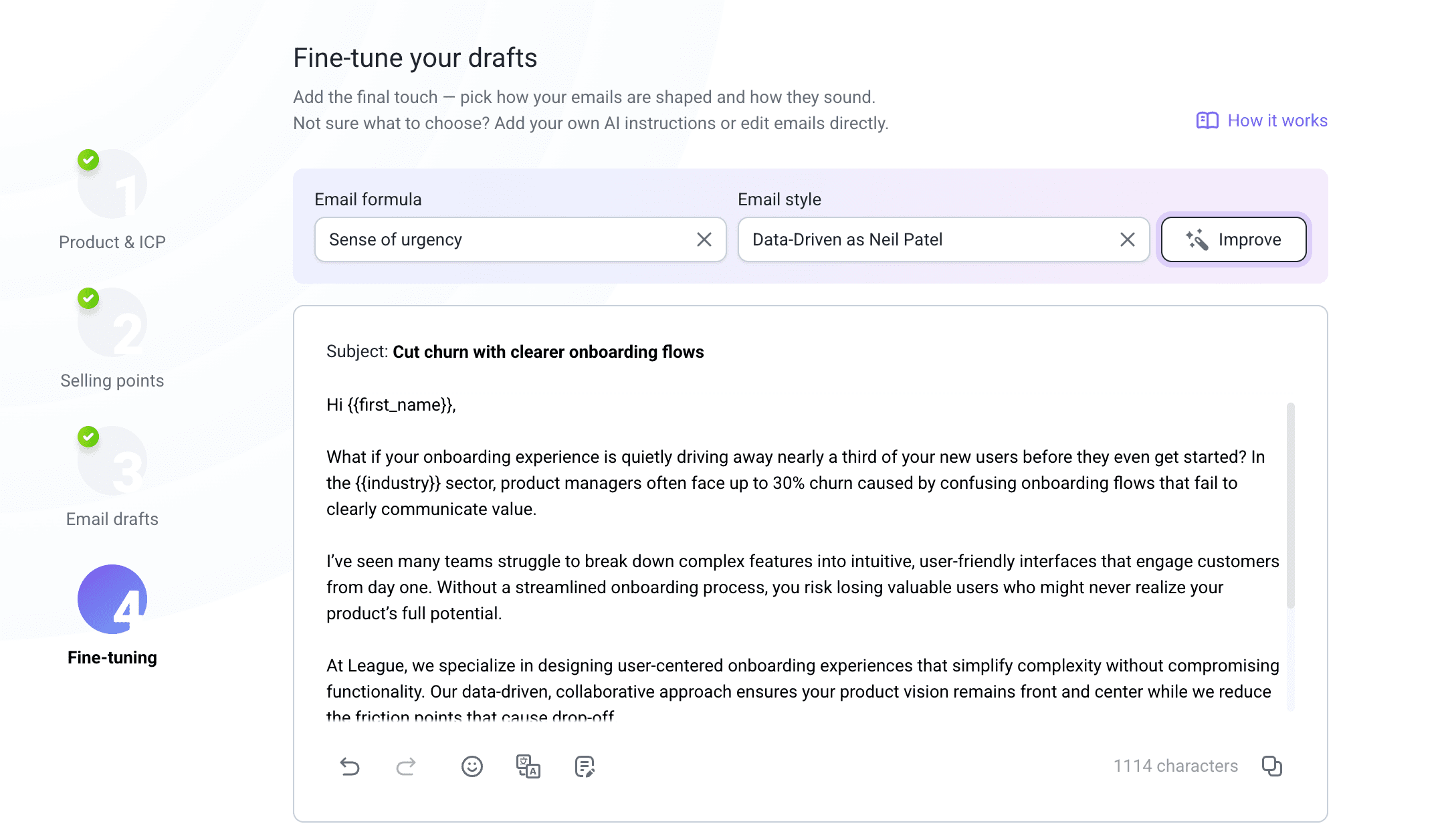
Professional email examples for common scenarios
I know that even with the step-by-step instructions, it’s sometimes hard to craft an email. We all get stuck sometimes and run out of ideas.
Unsure what your professional email should look like? Check out professional email examples below. You can also use them as templates by adding details relevant to your unique situation.
1. Sales email example
Subject: [Prospect’s name], increase conversions by [Impressive number]
Hi [Prospect’s name],
I noticed [Company milestone] – congratulations! I’m happy to see [Company’s name] thriving. But did you know that many teams like yours struggle with low lead conversion after [Company milestone]?
Our outreach tool increases conversions by [Impressive number] in [Specific time]. Would you like to know more? Let’s have a quick chat next week. Here’s my calendar link: [Calendly link].
Congrats again,
[Your email signature]
2. Follow-up email example
Subject: Following up on our quick chat about [Topic]
Hi [Prospect’s name],
It was nice talking to you at [Event] last week! I wanted to follow up on our conversation regarding how we can help [Company’s name] achieve [Benefit].
To give you an idea of what to expect from our [Product/Service], here’s a document with key results from [Case study]: [Link to a PDF file].
Would you be available for a 10-minute call next week to discuss this? Feel free to pick a slot here: [Calendly link].
Looking forward to hearing your thoughts,
[Your email signature]

8 Cold Email Templates And Strategies For Lead Generation
December 23 2025
3. Information request to identify a decision maker email example
Subject: Who can I connect with about [Topic]?
Hello [Recipient’s name],
I came across your contact on [Social media/Website/etc].
I’m looking to discuss [Topic/Project] with the appropriate person at [Company’s name], but I haven’t been able to identify the right contact.
Please point me to the person who oversees [Relevant area]. Any guidance you can provide would be greatly appreciated.
Thank you in advance for your help.
Best regards,
[Your email signature]
4. Job application email example
Subject: Application for [Position title] – [Your first and last name]
Dear [Hiring manager’s name/Hiring Team],
I am writing to express my interest in the [Position title] role at [Company’s name]. With [Number] years of experience in [Relevant field/Role], including [Key achievement/Impressive skill], I am confident I can contribute to your organization’s success.
Please find my resume and cover letter attached. I would love to discuss how my background and skills align with your organization’s needs.
Thank you for your consideration,
[Your email signature]
5. Product or service inquiry example
Subject: Inquiry: More information on [Product/Service name]
Hello [Recipient’s name],
I came across [Product/Service name] on [Social media page/Website]. I’m curious to learn more about how it can help us in [Specific area or industry].
Could you please share additional details on:
- Key features and customization options
- Pricing tiers and licensing
- Implementation timeline and support services
Additionally, if any case studies or white papers are available, I would appreciate links or attachments.
Thank you in advance for your assistance.
Best regards,
[Your email signature]
6. Partnership inquiry example
Subject: Partnership opportunity – [Project’s name]
Hello [Recipient’s name],
I’m [Your name], [Your title] at [Your company’s name]. We specialize in [Brief description of your company’s specialization]. After following [Recipient company’s name]’s success in [Specific achievement/Initiative], I believe our organizations have a great opportunity for collaboration.
Specifically, I imagine we could [Collaboration idea]. This type of partnership can yield [Projected benefit] for both our organizations.
Would you be open to a brief call next week to explore this further? Feel free to book a time directly here: [Calendly link], or let me know your availability.
Thank you for considering this, and I look forward to the possibility of working together.
Best regards,
[Your email signature]
Tools to improve your business email writing
In the Middle Ages, parchment was the gold standard for important correspondence, as it was durable and prestigious. Today, there are different gold standards for writing professional emails, and other tools that can help you with it.
Although I’ve written hundreds of messages, I still use tools for enhancing business email writing. Here is a list of resources I usually turn to:
- Grammarly
Grammarly is my favorite writing assistant that checks grammar, punctuation, and style in real time. The free version, which highlights only grammatical or punctuation errors, is sufficient for everyday business writing.
- Hemingway editor
The Hemingway app is indispensable if you want to maintain clarity and a cohesive style in your texts. This readability-focused tool highlights complex sentences, adverbs, and passive constructions. It helps you simplify your phrases, making your messages direct and easy to understand.
- ChatGPT, Perplexity, Claude, or other LLMs.
Large language models (LLMs) like ChatGPT can help you research your audience, draft, refine, and brainstorm letters. Use them to check if your message sounds natural, rewrite awkward sentences, or look for useful statistics.
Don’t ask them to write the letter for you, though. They weren’t designed for this task, and your recipient will most likely spot a generated message.
If I want to run my email through AI, I usually give the prompt like this: I’m writing an email to {target audience} about {topic}. Edit the draft below so it feels professional, is easy to read, and clearly outlines my goal/problem/proposal.
Email Marketing Specialist at Snov.io
- Snov.io AI Email Builder
While other AI models were created for a broad range of tasks, our AI writer is designed specifically for writing professional emails. This means you don’t have to create and perfect a prompt to generate a high-quality message. Simply choose the type of email you need to write and what you want to focus on, and AI will do the rest for you.
If you have defined Ideal Customer Personas (ICPs), you can use the Snov.io AI Studio to write a professional letter tailored to their unique desires and pain points. Once asked, our AI agent delivers five email variations based on the information provided in your ICP’s profile. You can choose which one you like best and then edit it further.
- Litmus
This app helps you test your email format across dozens of mail clients and devices. You’ll be able to catch rendering issues, broken links, and spam filter triggers before you send your message. It’s a great way to avoid unpleasant surprises, such as bounces or flags.
Around 80% of people use dark mode in Gmail. That means testing emails in dark mode is a must, not an option.
Email Marketing Specialist at Snov.io
- Canva
I turn to Canva when I need to quickly create infographics and one-page PDFs to include in my letters. After all, high-quality visuals keep readers engaged.
- Calendly
It’s not a writing or editing tool, but it is often indispensable in professional correspondence. Embed a booking link and allow your recipient to book a meeting with you directly instead of sending multiple back-and-forth messages.
💡 Quick tip:
You wouldn’t want your beautifully written professional email to miss the recipient’s inbox. To avoid it, run a deliverability check before hitting send. If your message is at risk of landing in spam, you’ll get precise directions on how to improve your deliverability.

After running this test, you will receive personalized recommendations on fixing any issues and ensuring your next campaign lands in the inbox.
Key takeaways
Nobody is born a writer, but mastering how to write a professional email is vital for everyone. Utilize a clear professional email format, practice good email etiquette, and leverage proper writing and editing tools – and every message you send will drive positive results.
Keep this guide as a reference to come back to in case you’re feeling stuck when writing the next letter. And if sending professional emails is something you have to do every day, try our email automation solution. It will save you time and effort, allowing you to focus on core business tasks.

